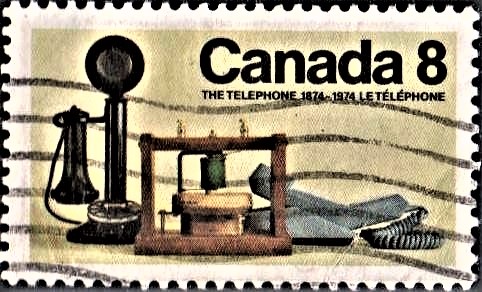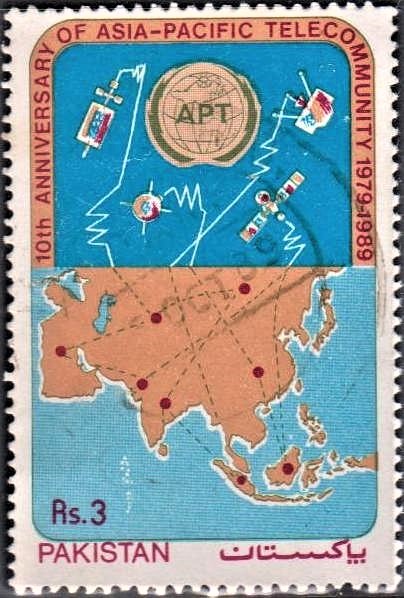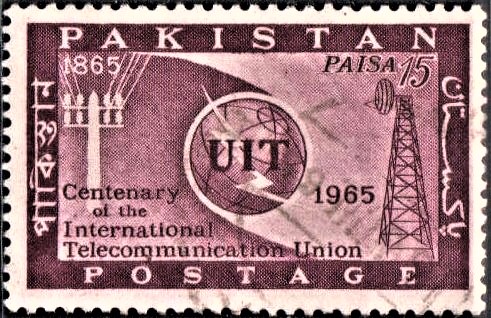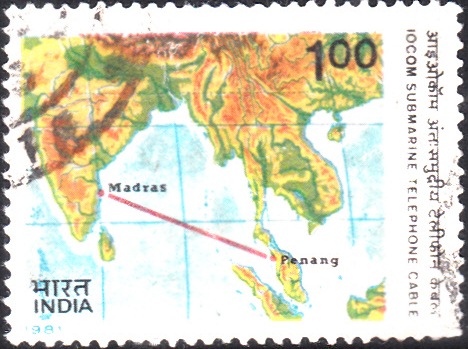
India on Telephone Services 1982
A commemorative postage stamp on 100 years of the Telephone Services :
Issued on Jan 28, 1982
Issued for : Indian Posts and Telegraphs Department is privileged to issue a special postage stamp to commemorate the 100 years of telephone services in the country.
Description of Designs : The stamp and first day cover were designed by C.R. Pakrashi and the first day cancellation by Charanjit Lal.
Type : Stamp, Postal Used
Colour : Multicolour
Denomination : 200 Paise
Overall size : 3.91 X 2.90 cms.
Printing size : 3.55 X 2.54 cms.
Perforation : 13 x 13
Paper : Unwatermarked adhesive stamp paper
Number printed : 20,00,000
Number per issue sheet : 35
Printing process : Photogravure
Printed at : India Security Press
About :
- Within six years of the invention of the Telephone by Alexander Graham Bell, the telephone bells started jingling in India. The Oriental Telephone and Electric Company Ltd., a London based firm, was granted licence by the then Governor-General to set up telephone exchanges at Bombay, Calcutta and Madras in November 1881. The telephone exchanges formally started functioning at these places on 28 January 1882.
- It was a truly humble beginning for the telephones with barely two dozen subscribers at Madras and a somewhat higher number of 90 and 102 at Bombay and Calcutta respectively. The telephones had a rough weather in view of opposition from commercial establishments. As late as in 1900 there appeared an advertisement in a leading newspaper of Madras “Take a telephone on concession. We will be happy to demonstrate the working of a telephone to anyone who calls on us.” What a different story it had been with the Company having to literally peddle telephones!
- In 1923, the Oriental Telephone & Electric Company set up three different companies – The Madras Telephone Company, The Bombay Telephone Company and The Bengal Telephone Corporation to cater to a larger clientele. By that time, as per the available reports, Madras had 1224 telephone connections, whereas Bombay and Calcutta had nearly 6,000 and 9,000 subscribers. At present, Madras has 19 Telephone Exchanges with 1.21 lakh telephones, Bombay has 43 Exchanges with 4.58 lakh telephones and Calcutta has 45 exchanges with 2.59 lakh telephones. Since Independence, India has made special efforts to indigenously manufacture telephone instruments, their accessories and other materials for telecommunication services. The Indian Telephone Industries was established at Bangalore as a public undertaking in 1948. Since then great strides have been taken in the expansion of telecommunication facilities in the country.
- Special attention is being paid to the establishment of long distance communications. Several multi-channel coaxial and microwave systems have been commissioned, making available large blocks of high grade trunk circuits and telephone facilities all over the country. The major cities in the country have been connected through Subscriber Trunk Dialling system. Over 272 cities are now on the national STD network. International subscriber dialling service has also been introduced on a limited scale to start with. Full advantage is being taken of the communication satellite and of our own Satellite Earth Stations. At the time of Independence we had only about 1.1 lakh telephones in the country; the number has exceeded 29 lakhs by 1981. Starting with the metropolitan cities, telecommunication service have spread far and wide and they are now serving the people in all the nooks and corners of the country.
Subscribe
Login
0 Comments
Oldest







